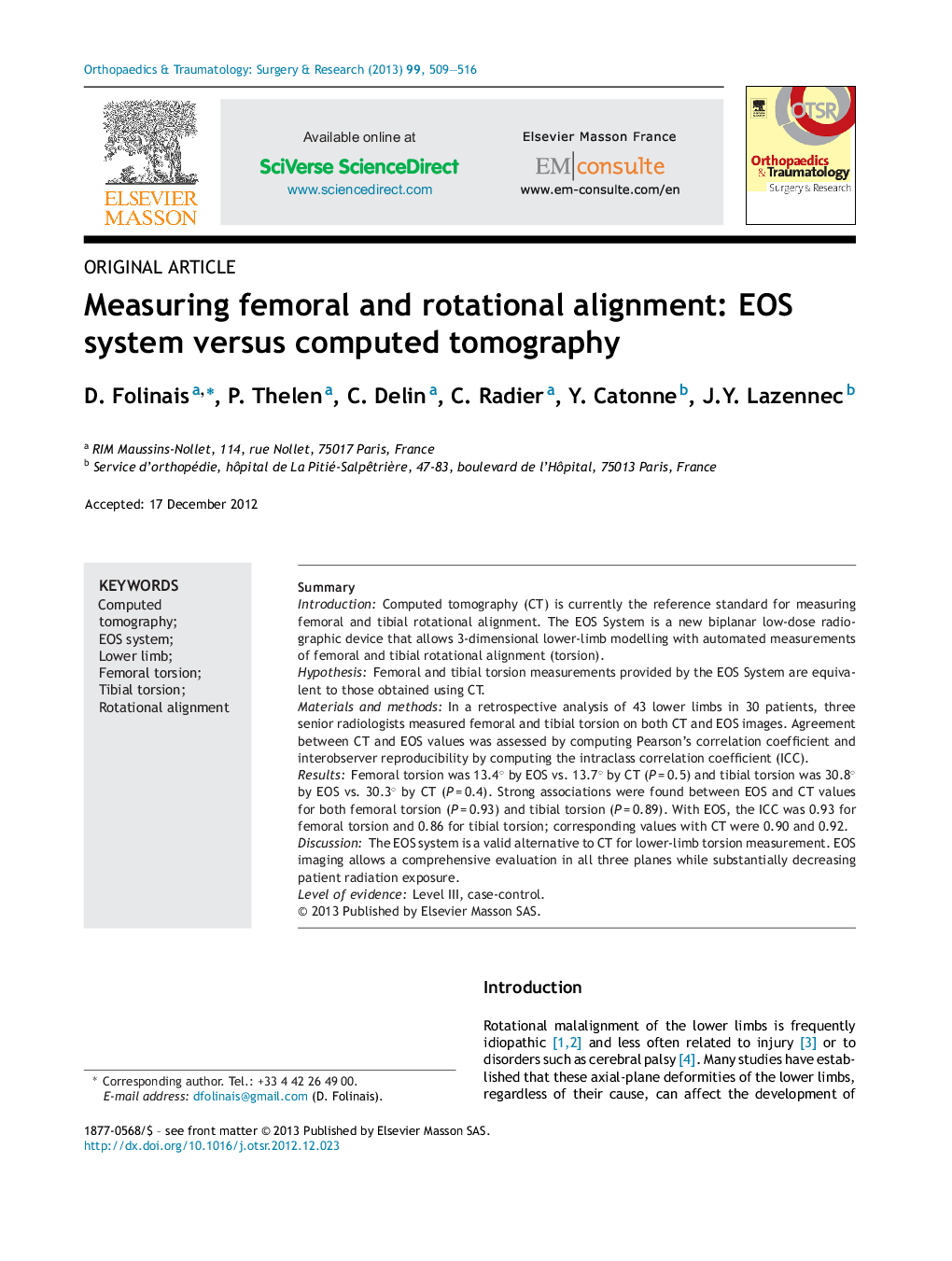| کد مقاله | کد نشریه | سال انتشار | مقاله انگلیسی | نسخه تمام متن |
|---|---|---|---|---|
| 4081752 | 1267607 | 2013 | 8 صفحه PDF | دانلود رایگان |

SummaryIntroductionComputed tomography (CT) is currently the reference standard for measuring femoral and tibial rotational alignment. The EOS System is a new biplanar low-dose radiographic device that allows 3-dimensional lower-limb modelling with automated measurements of femoral and tibial rotational alignment (torsion).HypothesisFemoral and tibial torsion measurements provided by the EOS System are equivalent to those obtained using CT.Materials and methodsIn a retrospective analysis of 43 lower limbs in 30 patients, three senior radiologists measured femoral and tibial torsion on both CT and EOS images. Agreement between CT and EOS values was assessed by computing Pearson's correlation coefficient and interobserver reproducibility by computing the intraclass correlation coefficient (ICC).ResultsFemoral torsion was 13.4° by EOS vs. 13.7° by CT (P = 0.5) and tibial torsion was 30.8° by EOS vs. 30.3° by CT (P = 0.4). Strong associations were found between EOS and CT values for both femoral torsion (P = 0.93) and tibial torsion (P = 0.89). With EOS, the ICC was 0.93 for femoral torsion and 0.86 for tibial torsion; corresponding values with CT were 0.90 and 0.92.DiscussionThe EOS system is a valid alternative to CT for lower-limb torsion measurement. EOS imaging allows a comprehensive evaluation in all three planes while substantially decreasing patient radiation exposure.Level of evidenceLevel III, case-control.
Journal: Orthopaedics & Traumatology: Surgery & Research - Volume 99, Issue 5, September 2013, Pages 509–516